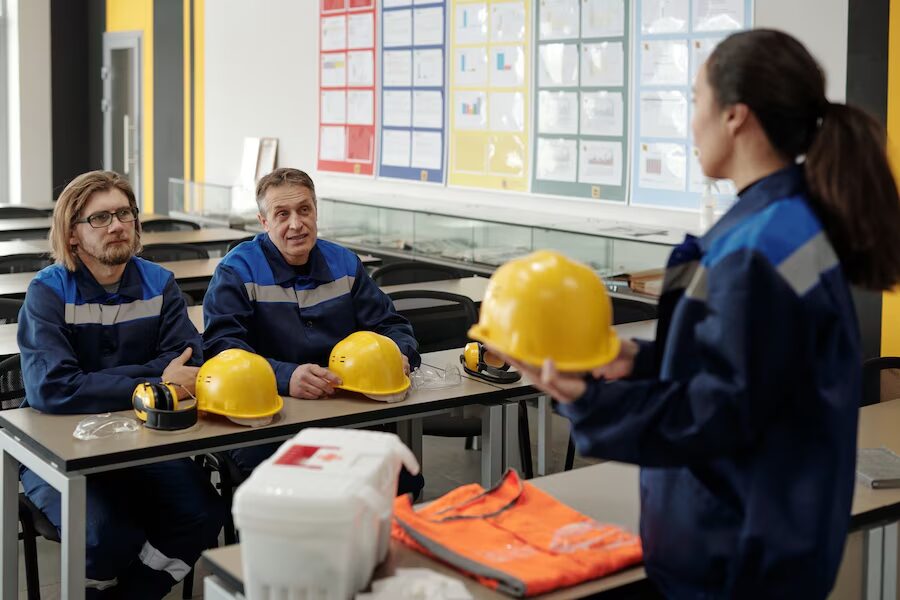Creating A Safe Workplace – 10 Best Practices And Legal Considerations
by Ankita Tripathy Business Development Published on: 18 March 2024 Last Updated on: 21 May 2025

Employers must make sure their employees work in a safe place. It’s not just the right thing to do; it’s the law. Not only does a safe workplace safeguard employees from potential dangers, but it also encourages high productivity among workers.
In this article, we will discuss 10 practical methods for establishing a safe working environment in the workplace. These methods will include the most effective practices and important legal issues.
Conducting Comprehensive Risk Assessments

Before beginning to adopt safety measures, it is essential to conduct comprehensive risk assessments. This is because it is important to identify potential risks in the workplace. The identification of potential dangers, such as slick floors, malfunctioning machinery, or ergonomic problems, is crucial.
One can facilitate it by conducting comprehensive risk assessments. It is important to conduct regular evaluations and include the participation of personnel who are a part of this.
Training Programs for a Safe Workplace
Providing staff with sufficient training on safety regulations and procedures is essential. Instruction on how to safely operate equipment, how to handle hazardous materials, and techniques for responding to emergencies are all included in this component.
It is important to ensure that personnel are up-to-date on the latest safety procedures by providing regular refresher courses.
Establish A Culture Of Safety

It is of the utmost importance to establish a culture in which safety is a top priority for all employees. From upper management to frontline workers- everyone must be considered.
According to Coffey McPharlin, a group of best negligent security lawyer Fort Lauderdale, “Encourage employees to communicate openly about any issues they may have regarding safety, acknowledge and promote safe actions, and invite employees to actively participate in safety efforts.”
Employees are more likely to adhere to safety measures meticulously. Especially when the safety concept becomes deeply embedded in the firm’s culture.
Cleanliness
A workplace that is clean and well-organized not only increases productivity but also lowers the likelihood of accidents occurring. To ensure that work environments are clutter-free, it is important to establish and adhere to regular cleaning plans.
The storage of materials and equipment in an appropriate manner ensures that they are conveniently available. Also, they do not present any potential risks to safety.
Monitoring And Controlling Chemical Exposure
In some occupational settings, workers have great exposure to potentially harmful chemicals. As such, there is a need for appropriate control mechanisms to reduce the likelihood of exposure risks. Moreover, it promotes a safe workplace.
Some examples of this are the utilization of ventilation systems, the provision of suitable personal protective equipment, and the safe storage of chemicals. In addition, employers must provide training on properly handling and disposing hazardous materials.
Use Personal Protective Equipment (PPE)

Given the nature of their work, employees might have to wear personal protective equipment. This could be helmets, gloves, safety goggles, or earplugs.
Employers should provide the appropriate personal protective equipment (PPE), and employees should be trained in the correct way to use it. Regular inspections should take place regularly to check the state of personal protective equipment (PPE) and replace any damaged or worn-out equipment.
Ergonomic Designs
Workstations that have ergonomic designs should be put to use. Employees who perform repetitive jobs or work in uncomfortable positions are more likely to suffer from musculoskeletal illnesses. The utilization of ergonomic workstations can reduce the likelihood of such injuries.
To encourage healthy posture and reduce strain, this involves the provision of chairs that can be adjusted, ergonomically designed keyboards, and appropriate desk heights.
Preparedness Plans For Emergencies
It is possible to save lives by having well-defined emergency preparedness plans in place in the case of an emergency, such as a fire, a natural disaster, or a medical issue.
Evacuation protocols, strategic assembly sites, and directions for contacting emergency services should be a part of such preparations. One must also conduct regular drills to ensure that personnel are familiar with the procedures to follow in the event of an emergency.
Take Action Against Harassment And Violence

Both workplace violence and harassment present significant dangers to the health and safety of worker employees. The prevention and resolution of violence, bullying, and harassment in the workplace should be the responsibility of employers, who should have clear rules in place.
Employees must have proper knowledge through training programs on how to recognize and report inappropriate behavior. It also teaches that appropriate disciplinary actions should be taken against those who engage in behaviors that are inappropriate.
Maintain Compliance With Legal Requirements.
It is of the utmost importance for employers to maintain continuity of compliance with the applicable occupational health and safety requirements. This encompasses rules implemented at the federal, state, and local levels that govern workplace safety.
Legal liabilities, fines, and damage to one’s reputation are all potential outcomes that might arise from failing to comply with these standards. The workplace should be subjected to routine inspections to guarantee that it satisfies all regulatory criteria.
Final Thoughts
It is necessary to take a preventative approach that considers both the best practices and the legal issues to establish a healthy and safe workplace.
Businesses can protect the health and productivity of their workforce by carrying out risk assessments, ensuring that proper training is provided, cultivating a culture of safety, and maintaining compliance with regulations.
Investing in workplace safety reduces the likelihood of potential hazards and helps create a good working atmosphere in which people feel appreciated and protected inside their jobs.
Read Also:



































































































